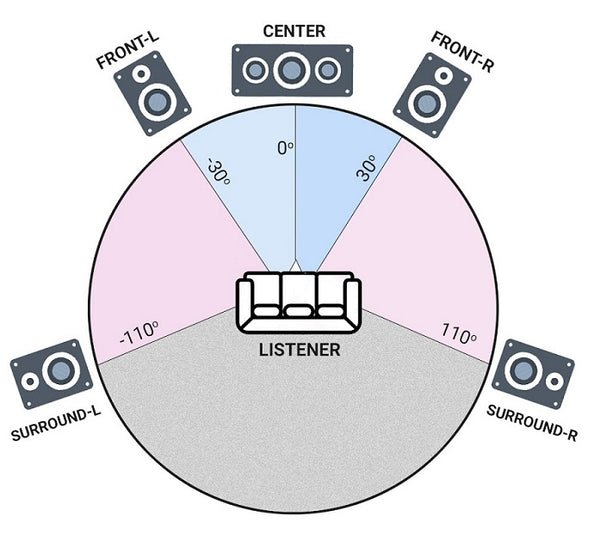
The popularity of home theatre systems continues to climb rapidly as people switch to consuming digital content at home, as a common form of entertainment, given the implications of the post-pandemic world. But the confusion arises when we ask, which one is a better option, 5.1 or 7.1 surround sound? Does 7.1 sound offer a substantial enough improvement over 5.1 systems to make it desirable for your home theatre?
If you’ve been questioning exactly what kind of sound system to get, it would be a good idea to have an objective look at both surround sound setups. What is appropriate for you depends on a number of various variables, including personal preferences, so let’s jump right in, and discuss the differences.
First, the bare basics of surround sound
A 5.1 surround sound has a front left, front right, front centre, surround right and surround left speakers along with a subwoofer.
A 7.1 surround sound system has an additional set of rear surround speakers, while the rest of the setup is similar to a 5.1 surround sound system. The use of additional surround rear speakers works exceptionally well in larger living spaces. But, some living spaces may not have sufficient space for the arrangement of an additional set of speakers at the back.
Pros and cons of 5.1 and 7.1

A 5.1 system comes with five small speakers and one subwoofer that handles the bass. The centre speaker sits directly in front of your listening position, under your TV. Two front speakers are based on either side of the TV. The remaining two speakers usually sit to either side of your preferred listening position, like on both sides of your couch. The subwoofer is usually placed in a corner, or to one side of your television set.
The best thing about 5.1 systems is that they are self-contained, eliminating the need for buying additional equipment. It is mostly a right out of the box solution. They usually come with their own receiver that connects your speakers to your TV. However, for bigger rooms, a 5.1 sound system may not deliver the most stellar, immersive sound experience of an audiophile-grade.
A 7.1 system that has the same set up with two additional speakers that are identical to the ones on either side of your listening position, positioned behind it. You can bolt them to the wall, facing ear levels to get the full surround sound effect. They pack a punch with the added power of two additional surround speakers. For a deeper surround sound listening experience in a large, sprawling space, a 7.1 system is a no-brainer choice. They offer lossless audio which is similar to the movie studio’s original. However, the theatre-quality sound experience that a 7.1 system offers comes with some disadvantages.
They are definitely more expensive and difficult to set up as compared to a 5.1 system.
To determine what sound system is an ideal fit for you, also factor in the room size, furnishings and listening position.
5.1 setups are a good pick for music listening, and the most popular choice for home theatre enthusiasts. 5.1 has both wired and wireless solutions. It’s a cool upgrade to the sound coming out of your TV. But if you want to get access to more surround sound formats 7.1 is for you. Remember though that 7.1 systems require 7.1 compatible A/V receivers. It is capable of rendering a richer sound experience but comes with an expensive price premium. Snag a 5.1 surround sound package if you want to keep things more affordable and have space constraints.
Here’s a quick comparison between 5.1 and 7.1 systems
5.1 Surround Sound |
7.1 Surround Sound |
| 5 Standard Channels +1 Subwoofer | 7 Standard Channels + 1 Subwoofer |
| Ideal for Small to Medium Rooms | Ideal for Large Rooms |
| Available in Dolby Digital and DTS Format | Available in Dolby TrueHD, DTS-HD Master Audio Format |
| Relatively Cheaper Than 7.1 System | More Expensive Than 5.1 System |
| It offers the ease of simpler set up | It requires more involved configuration |
A word on Dolby Atmos to make movie-watching an immersive experience
Dolby Atmos is powerful enough to deeply immerse you in a stellar sound experience. Sound can have an indelible impact on the movie-watching experience and Dolby Atmos is a 3-dimensional sound format. If you’re looking to replicate the big-screen experience at home (we certainly are :-)), installing extra speakers (2 or 4) placed up high in the ceiling, will create an ideal Dolby Atmos setup.
For more information, you can reach out to us at Ooberpad, for a proper walkthrough and help enhance your home entertainment experience.








